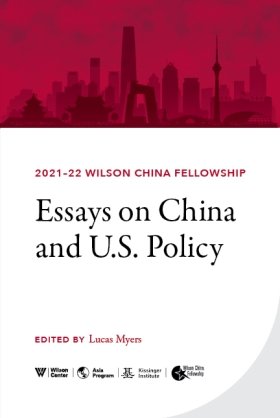Green Cooperation: Environmental Governance and Development Aid on the Belt and Road

Abstract
The Belt and Road Initiative (BRI)—China’s multi-trillion-dollar infra-structure program across 145 countries and counting—is provoking concern among observers that China is exporting its polluting model of development. Yet, China’s leaders frame the BRI as a pathway for “green development,” pointing to China’s ambitious climate targets and leadership in green industries like renewable energy. To date, efforts to “green” the BRI have focused on mitigating impacts of large-scale infrastructure—but a “soft” approach to greening is emerging. In this essay, we trace the rapid rise of what we call green development cooperation: environmentally-focused activities that forge people-to-people connections with host countries. Activities include training, dialogues, research, and development projects, some of which build on existing initiatives, and some which are entirely new. Our systematic review of these engagements finds that cooperation emphasizes technocratic approaches to environment and development problems that are based on China’s own experience. Cooperation thus offers a means to position China as an alternative environmental leader—a kind of green soft power—while also facilitating transfer of Chinese green technology and expertise to the Global South. At the same time, the green BRI is a fluid and malleable concept, shaped by diverse Chinese and host country actors who seek to advance their own objectives through cooperation. This carries the risk of ineffective or “greenwashed” cooperation interventions, but also creates opportunities for new forms of engagement and dimensions of coalition-building, and an important opening for improving the environmental performance of the BRI.
Implications and Key Takeaways
- At the broadest level, the green BRI discourse should be understood as just that—a discourse. This means that it can be used as a tool for greenwashing, but also offers a powerful platform for engagement with a diverse range of Chinese actors, many of whom are working hard to improve environmental outcomes on the BRI. Calling out cases of greenwashing is far easier than building new engagements. Attention and resources should thus target this latter more difficult but ultimately more transformative task.
- U.S. engagement should focus on identifying shared perspectives and common goals for greening the BRI, both with Chinese and BRI host country actors. China wants to be seen as a global leader in sustainable development, which provides an opportunity to work with Chinese counterparts in environmental issues of shared concern.
- Policymakers and concerned observers should build on collaborations currently in place. Many of the activities identified in this paper received some input from non-Chinese specialists hailing from multilateral institutions and NGOs. These partnerships should be encouraged and strengthened.
- At the same time, the United States should recognize that Chinese actors are mainly promoting the green BRI to their own government, not the international community. Measuring the BRI against international environmental standards is worthwhile, but leverage for change will only come through convincing Chinese decision-makers—a task that can be advanced by U.S. engagement in green cooperation.
- Moreover, the United States should view China’s coalition building in the Global South as a new area of collaboration, not a contest. USAID should provide resources to equip BRI host country actors and institutions with tools to navigate China’s policy and business context—and leverage these partnerships for real environment and development gains.
Authors

Assistant Professor, Department of Urban and Environmental Studies, Loyola Marymount University.

Postdoctoral Research Fellow, Atkinson Center for Sustainability, Cornell University
Explore More
Browse Insights & Analysis
Combatting Cybercrime: Defending America's Security and Financial Future

Video: On the Border of War
